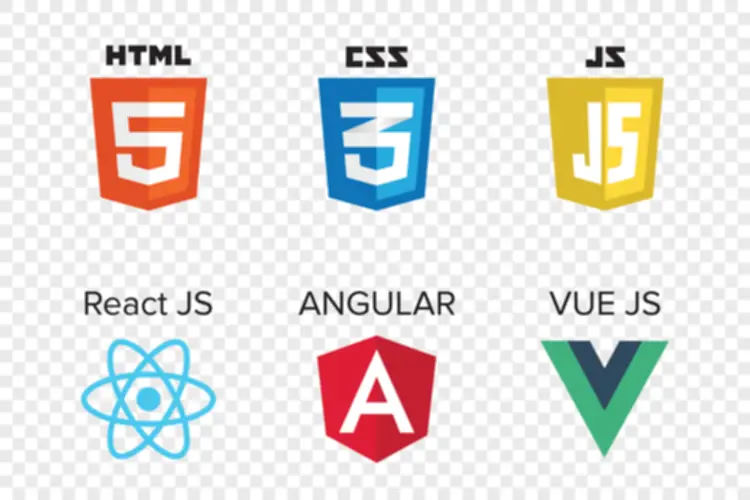If functions can move via separate environments through connectivity or integration, you can think about it a hybrid cloud surroundings. Examples of a hybrid cloud system include one private and one public cloud, two or extra https://www.globalcloudteam.com/ personal clouds, or two or more public clouds. It also can embrace virtual environments related to public or non-public clouds.
Apple’s iCloud, for example, is an instance of cloud computing that allows users to back up their telephones, store photos, and entry saved information online. Serverless structure enables a sort of enterprise IT design the place code is modular and isolated. It is a cloud computing execution mannequin where sources are provided as per real-time demand, assigned to every isolated module. Sometimes, serverless is restricted to know-how companies and platform suppliers who want to make sure maximum downtime for their products. This includes software-as-a-service (SaaS), which occupies the biggest market share, and platform-as-a-service (PaaS), which is ready to develop the fastest. Private clouds present the next degree of security via company firewalls and inner hosting to ensure that an organization’s sensitive knowledge just isn’t accessible to third-party providers.
How Does Cloud Computing Work?
Containers provide an independent digital environment to develop and run functions, regardless of the parent internet hosting surroundings (on-premise servers, cloud, or hybrid). Basically, it permits companies to arrange tiny, segregated clouds inside their very own infrastructure to improve their development capabilities. The layer made up of software and hardware, i.e., the computers, servers, central servers, and databases, is the back-end layer. This layer is the primary component of cloud and is entirely answerable for storing info securely. To ensure seamless connectivity between devices linked by way of cloud computing, the central servers use a software program known as middleware that acts as a bridge between the database and functions. Integrating AI and machine studying with cloud computing enables businesses to harness advanced analytics, automation, and clever decision-making.

At A Look: What’s Cloud Computing?
- Apart From storage and computing power, software engineers can use cloud suppliers to develop and check application software on a wide variety of units and specs without having to arrange bodily machines.
- In Accordance to Gartner’s Magic Quadrant 2024, the eight high cloud platform service suppliers hold 97% of the global market share.
- In turn, suppliers of cloud-computing services can benefit from vital economies of scale by delivering the identical providers to a broad range of shoppers.
In some circumstances, you could use software software program written and provided by the cloud provider, the place you pay for entry on a per-user or different consumption-based basis. In different cases, you may resolve to host some or your whole personal homegrown software program within the cloud, using solely the provider’s infrastructure techniques. Cloud computing is a model for delivering computing services, including infrastructure, software, storage, databases, improvement platforms and more, over the internet.
Case Study: Us Centers For Medicare & Medicaid Services’ Cloud Journey

With the right cloud provider, you’ll find a way to leverage a modern cloud computing structure to create sooner, increase productivity, and decrease prices. While it’s an ongoing course of, cloud computing, amongst different applied sciences, may help corporations go through the phases of a digital transformation sooner and more effectively. The advantages are quicker time to market, simplified innovation and scalability, and reduced threat.
Support for Affected UsersOIT is providing targeted steerage to these whose data utilization presently exceeds the new thresholds. This includes options for archiving, data cleanup, and, in some cases, extra storage upon request. Faculty, workers, and researchers with significant data wants are encouraged to discover different storage solutions, corresponding to analysis knowledge repositories and departmental storage allocations.
The exact advantages will range based on the sort of cloud service being used but, basically, using cloud services means firms not having to purchase or maintain their very own computing infrastructure. Whereas the massive cloud distributors could be very happy to offer trello all of the computing needs of their enterprise clients, increasingly companies wish to unfold the load throughout a quantity of suppliers. Software as a Service (SaaS) is the delivery of applications as a service, most likely the model of cloud computing that most individuals are used to on a day-to-day foundation. The underlying hardware and working system is irrelevant to the tip user, who will entry the service via an online browser or app; it is often bought on a per-seat or per-user foundation.
They handle the network’s safety, making certain data safety and compliance with rules. Additionally, they deal with the upkeep and updates, guaranteeing the infrastructure’s optimum efficiency. In some environments, one cloud provider doesn’t reduce it, which requires you to spread your services across a quantity of cloud computing platforms. The inherent advantage here is that, with a multi-cloud technique, you won’t be putting all your eggs in a single basket. This information discusses multi-cloud deployment, specializing in tips on how to implement the strategy, plus explaining… Most IaaS suppliers provide extensive backup and restoration instruments that allow you to automatically retailer full or incremental information backups in a distant information center.
As An Alternative, the functions are located on a remote cloud community that might be instantly accessed by way of the net or an API. With on-demand capabilities, organizations can run applications on the cloud, leveraging the flexibility and efficiency of cloud servers. This approach ensures that they only pay for the sources they use, making it a cheap answer for many enterprises. A private cloud is a cloud computing mannequin where the infrastructure is dedicated exclusively to a single group. Non-public clouds may be hosted on-premises or by a third-party supplier, but they do not appear to be shared with other organizations.
When a company chooses to use cloud computing, its workers, prospects, partners, and suppliers access the IT tools they want over the internet. To infrastructure customers, the cloud simply resembles a distant data heart that may be managed using acquainted system administration instruments, similar to dashboards and consoles. A important difference, nonetheless, is that the CSP owns and maintains that distant knowledge heart, as well as all the hardware inside it, and is liable for providing power, cooling, connectivity, and physical safety.
Cloud infrastructure enables customers to entry those assets through the internet (through a course of known as virtualization). This allows businesses to optimize their infrastructure primarily based on specific requirements and achieve a stability between security, efficiency, and cost-efficiency. One of the most common forms of cloud know-how options is Infrastructure as a Service (IaaS).
This model is often part of a cloud computing service where customers can scale their cloud assets up or down based on present demand. By using cloud servers, corporations can get pleasure from benefits corresponding to enhanced cloud security, price savings, and improved scalability. The shared cloud mannequin additionally permits multiple users to access cloud assets efficiently, guaranteeing that data and cloud operations are optimized for performance and reliability. Despite its many advantages, cloud computing includes some disadvantages, corresponding to dependency on web connectivity and potential latency points. Considerations around information security within the cloud setting also persist, though cloud providers provide robust security measures. Cloud suppliers make investments closely in the latest security technologies and protocols.
That stated, it doesn’t but have all the superior features provided by its opponents. Aleksander Hougen, the co-chief editor at Cloudwards, is a seasoned expert in cloud storage, digital security and VPNs, with an academic background in software program engineering. Past his prolific writing dedication, Aleksander helps with managing the internet site, preserving it running smoothly always. He also leads the video manufacturing staff and helps craft e-courses on online cloud technology solutions expertise topics. Outdoors of the skilled realm, he’s a digital nomad with a ardour for traveling, having lived in many international locations across four continents.
This collaborative nature boosts productiveness and innovation inside the organization. Making An Attempt to know and articulate the differences between public, non-public, and hybrid cloud? Analysts argue that because the cloud now underpins most new technological disruptions in every thing from mobile banking to healthcare, utilization is only going develop. It’s hard to see many new know-how tasks being delivered that don’t harness the cloud in some way. Gartner says that more than 85% of organizations will embrace a cloud-first principle by 2025 and won’t be able to fully execute on their digital methods without it.
